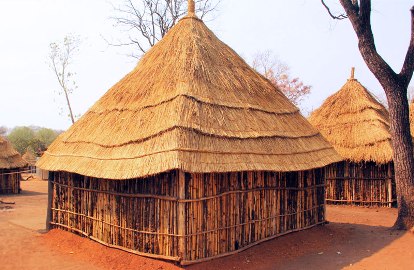IOM to build hundreds of new shelters for S. Sudanese refugees Ethiopia
By Tesfa-Alem Tekle
February 17, 2017 (ADDIS ABABA) – The International Organization for Migration (IOM) on Friday disclosed that it is building hundreds of transitional shelters for tens of thousands of South Sudanese refugees in Ethiopia.

Nguenyyiel camp was opened in September 2016 to accommodate an estimated 4,500 refugees; however, it currently hosts 27,620 refugees who have fled their home country.
Refugee flows from South Sudan to Ethiopia didn’t see a sign of decline due to ongoing fighting and food insecurity.
According to IOM officials, the transitional shelters are a considerable improvement on the basic emergency shelters currently being used by newly arriving refugees in the camp.
The new shelters, which will be built using local techniques and materials, according to IOM official will contribute to managing the continued flow of South Sudanese refugees into Gambella
“The new transitional shelters and the ongoing relocations are vital in our ongoing efforts in managing the inflow of South Sudanese refugees into Gambella in a way that really responds to the needs of refugees,” said Miriam Mutalu, the Head of IOM Ethiopia’s Sub-Office in Gambella.
The construction of the shelters is being carried out in close cooperation with the Administration for Refugee and Returnee Affairs (ARRA) which is UNHCR’s main government counterpart which is maintained to ensure the protection of refugees in Ethiopia.
The construction of the shelters aimed to relocate refugees from the border is being financed by the UK’s Department for International Development
Ethiopia currently shelters some 325,000 South Sudanese refugees in different camps in Gambela region.
The world’s newest nation gained its independence in 2011 but plagued by a civil war in December 2013 after President Salva Kirr accused his former deputy turned rebel leader of a coup plot.
The conflict has forcibly displaced over 2.6 million citizens making the east African nation of the countries that saw the highest level of conflict-induced displacement worldwide.
UNHCR on Thursday said it is fully engaged in coordination mechanisms to mainstream the needs of refugees within humanitarian and national plans.
These coordination mechanisms include the UN Country Team, the Humanitarian Country Team, the Refugee Task Force, and donor, NGO and inter-agency meetings at the national, field and camp levels.
“This has ensured an effective coordination environment in the context of the Level 3 Emergency for South Sudanese refugees as well as the development of a regional response plan for the same situation in 2017,” said the UN refugee agency.
Ethiopia provides protection to refugees from some 20 countries, with the majority originating from South Sudan, Somalia, Eritrea and Sudan.
South Sudanese, Eritreans, Yemenis and Somalis originating from South and Central Somalia are granted automatic refugee status.
While to all other individuals refugee status determination is undertaken by the Government’s Eligibility Committee on which UNHCR sits as an observer.
The Ethiopian Government maintains the policy requiring refugees to reside in refugee camps. However, the Government has also an Out-of Camp-Policy (OCP) which allows certain refugees to reside in the urban areas, primarily Addis Ababa
The out of camp policy benefits refugees in need of special medical attention unavailable in camps; refugees with serious protection concerns or inability to stay in camps for humanitarian reasons and Eritrean Refugees enrolled in OCP.
Currently, a total of 19,977 refugees under the OCP programme reside in the capital Addis Ababa.
(ST)
